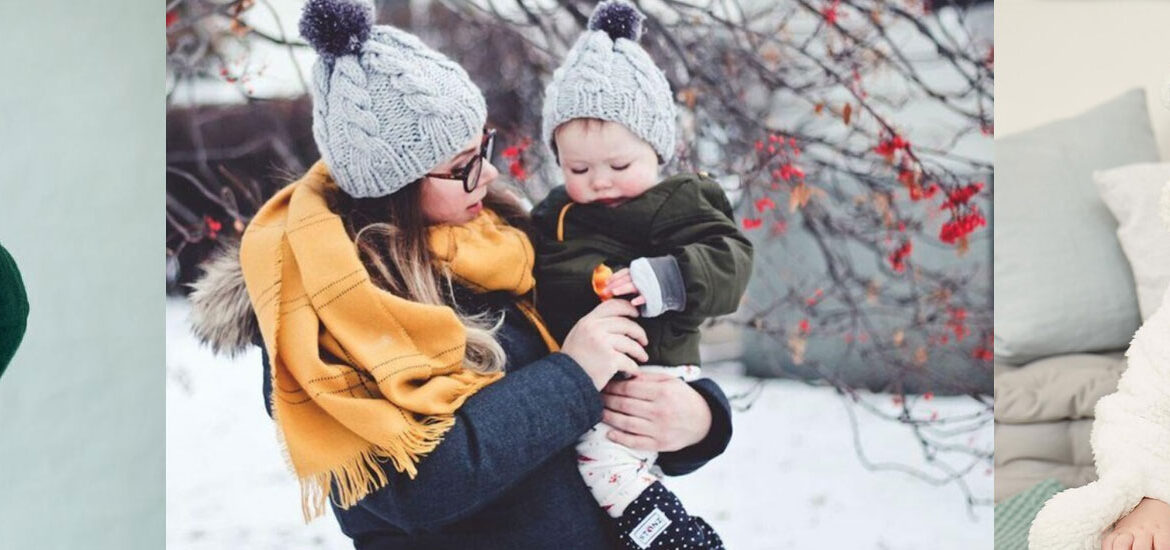During the cold winter months, babies should be kept as warm as possible. Newborns seem cute wrapped up in warm day and night attire, but they need the extra warmth for their health. Because newborns are more sensitive to extremes in heat or cold, it’s critical to learn how to dress them in your local climate in the winter, especially if it snows. The steps below will teach you how to keep your youngster safe while it’s freezing outside. You’ll also learn what you need to get for your baby to keep him or her warm on cold evenings. Once you’ve decided on the apparel and footwear you’ll need, you may start putting items on your baby registry or shopping for them yourself.
1. Layers for Baby in the winter
On warmer winter days inside your house, your infant may only need long-sleeve bodysuits, a pair of comfy slacks, and some woolen socks with booties. You should bundle up if the weather gets colder or if you need to go outside for even a few minutes. Put on a hoodie or a sweater. Layer a coat, jacket, or snowsuit on top of the second layer if necessary. If you’re worried about your child’s legs being cold, layer leggings or long underwear on top of sweatpants. While having the proper number of layers for the cold weather is essential, you should not overdo it. Your child may soon overheat and become chilled. Keep an eye out for signs of overheating in your babies, such as pink or hot skin and a rapid heartbeat. Remove a layer if you think your child is hot and keep an eye on them for symptoms of illness or discomfort. If you have any concerns about winter layering, talk to your doctor about what is suitable for your locality.
2. Cold-Weather Baby Accessories
When it gets below freezing outside, the parenting experts at What to Expect to recommend keeping your child indoors. If you need to go errands or pay a visit to a loved one, make sure your child is properly suited for the weather. Newborn mittens are beneficial for more than just protecting injury from sharp, tiny nails. They’re also useful for keeping young hands warm in a car seat or on a short trip outside. Super soft hats will keep your head and ears warm. Toes will be kept as warm as possible with thick socks and an added layer of protection in the form of baby booties. If you want hard-soled shoes for your child, there are several options.
3. Keep Your Baby Warm During Winter Sleep
New parents are usually concerned about what their newborn should wear to bed during the cold. Because your child will be completely covered in one garment, you can be assured that they will be more comfortable than if they were wearing separates. A single zipper also makes it much easier to change diapers in the middle of the night. Another common option is a long-sleeve suit with a pair of pants and socks. Even if the baby wear additional clothing, the one-piece bodysuit ensures that the baby’s stomach and back are always covered. If your baby needs an extra layer, use a swaddling blanket or a wearable blanket. Velcro straps and zippers on these one-of-a-kind sleep accouterments hold the blankets in place all night. They’re made of a variety of materials, including fleece and cotton.
4. Keeping Baby Warm in the winter
Every new parent wants their child to be as peaceful and quiet as possible. When you’re dealing with a newborn in hot temperatures, it’s much more difficult. If it’s cold outside, be sure to cuddle and snuggle your child in the coziest, warmest gear you can find. Baby-footed pajamas and bodysuits will make things easier for you and your family starting today because you’ll be chilly and fatigued.
5. Be on the lookout for warning signals.
If your kid begins to shiver or his extremities—hands, feet, and face—become cold and red, or pale and hard, bring him inside right away. “Rewarming the cold area by rubbing it may do additional injury to the cold skin,”.Instead, use warm washcloths to gently warm the skin before putting on warm, dry clothes. If he doesn’t improve in a few minutes, call your doctor. Additional signs that your infant has grown too cold and needs medical attention include lethargy, non-responsiveness, and bluish lips or cheeks.

